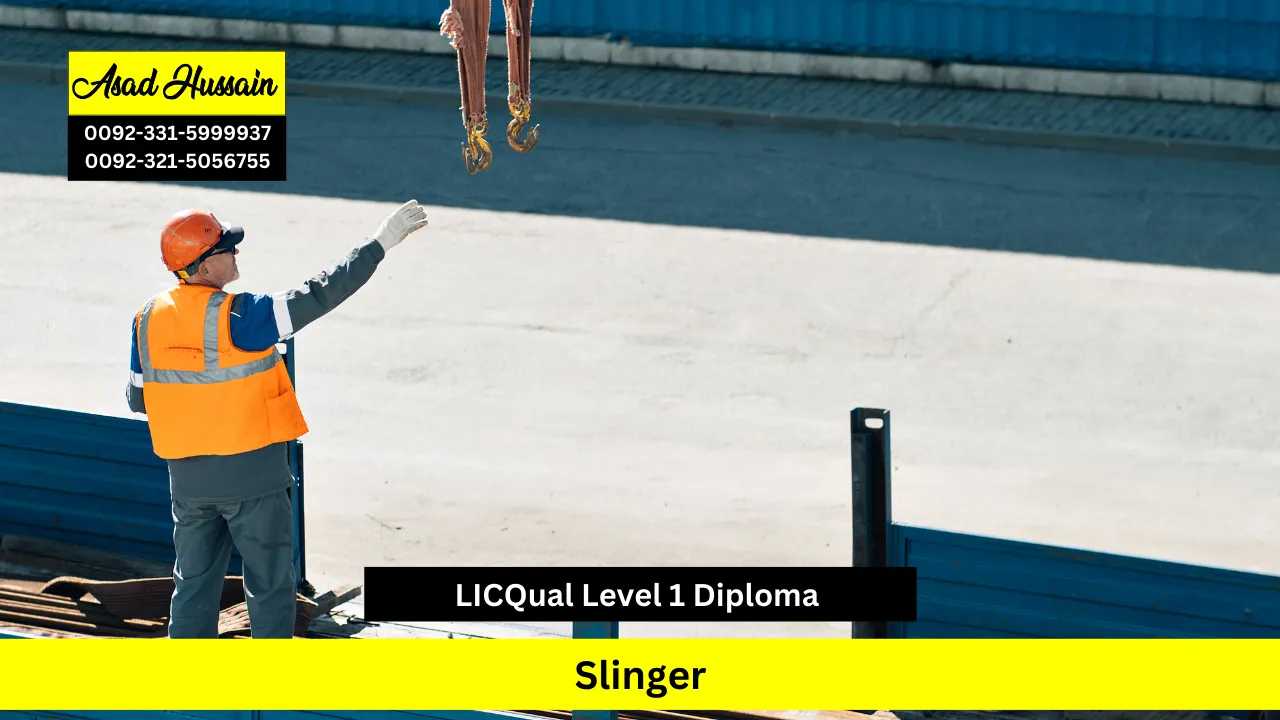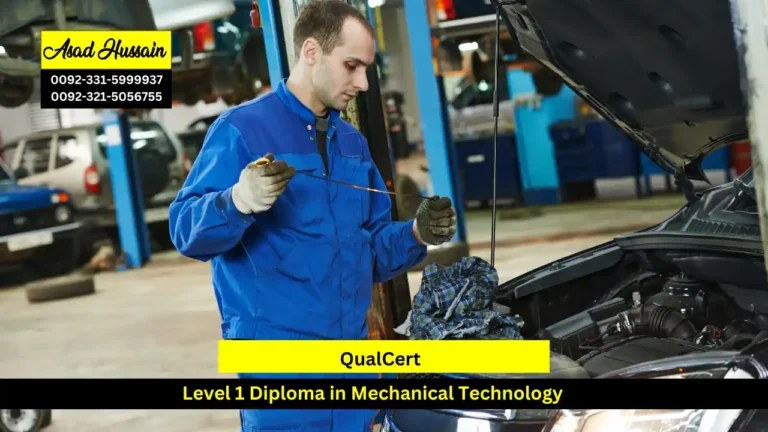The LICQual Level 1 Diploma in Slinger is a foundational qualification designed to equip learners with essential skills and knowledge for safely handling and directing loads in lifting operations. In industries such as construction, logistics, and manufacturing, the role of a slinger is critical to ensuring operational efficiency and the safety of personnel and equipment. LICQual Level 1 Diploma in Slingerprovides the core competencies required to perform sling operations under supervision while adhering to international safety standards.
The purpose of LICQual Level 1 Diploma in Slingeris to introduce learners to the principles of load handling, rigging, and communication techniques required for effective slinging operations. Participants will learn how to identify appropriate lifting equipment, attach and secure loads safely, and follow established procedures to prevent accidents and damage.
Through a combination of theory and practical exercises, learners will gain hands-on experience in load inspection, rigging techniques, and safe lifting practices. Emphasis is placed on risk awareness, teamwork, and adherence to regulatory standards, ensuring that graduates can operate confidently in real-world environments.
By completing the LICQual Level 1 Diploma in Slinger, learners will build a strong foundation for further training in lifting operations and related disciplines. The qualification is ideal for beginners seeking to enter the industry, as well as professionals aiming to formalise their skills with internationally recognised credentials.
Program Highlights
Mandatory Units
- Introduction to Slinging and Signalling
- Safe Lifting Practices
- Selection and Inspection of Lifting Equipment
- Lifting and Rigging Techniques
- Communication Skills for Lifting Operations
- Understanding Safety Regulations in Lifting
The entry requirements for the LICQual Level 1 Diploma in Slinger are designed to ensure that learners are prepared to engage with practical training and develop essential skills safely and effectively. These requirements provide a balance between accessibility for beginners and maintaining high standards of competency and safety.
Age Requirements
- Learners must be at least 18 years old at the time of enrolment.
Educational Requirements
- A basic education is required; learners should be able to read, write, and understand English at a functional level.
- No specific prior qualifications are necessary, making this course suitable for beginners.
Professional Experience
- Prior experience in construction, logistics, or lifting operations is beneficial but not mandatory.
- Beginners without prior experience can enrol, as the course provides foundational training in slinging operations.
English Language Proficiency
- Learners should have sufficient English skills to understand instructions, safety protocols, and technical terminology.
- International candidates may be required to demonstrate basic English proficiency if English is not their first language.
These entry requirements ensure learners can fully benefit from the programme, develop confidence in practical applications, and apply safe and effective slinging techniques in industrial settings.
The LICQual Level 1 Diploma in Slinger equips learners with the fundamental knowledge, skills, and practical abilities required to perform safe and effective slinging operations. Upon completion, learners will be confident in handling loads, using lifting equipment safely, and following workplace safety standards.
Introduction to Slinging and Signalling
- Understand the basic principles of slinging and load handling.
- Identify the roles and responsibilities of a slinger in lifting operations.
- Demonstrate the correct use of standard hand signals and communication methods.
- Recognise hazards associated with lifting and slinging operations.
- Apply basic techniques to ensure safe positioning of loads.
Safe Lifting Practices
- Implement safe working practices when handling loads and directing lifts.
- Identify potential risks and apply measures to prevent accidents.
- Demonstrate safe body mechanics and posture during lifting operations.
- Apply control measures for various types of loads to avoid damage or injury.
- Recognise emergency procedures in lifting situations.
Selection and Inspection of Lifting Equipment
- Identify different types of lifting equipment, including slings, hooks, and shackles.
- Conduct pre-use inspections to ensure equipment safety and integrity.
- Recognise defects or faults that could compromise lifting operations.
- Apply safe methods for attaching loads to lifting equipment.
- Maintain equipment records and follow organisational safety procedures.
Lifting and Rigging Techniques
- Demonstrate correct rigging techniques for different types of loads.
- Apply safe methods for positioning and balancing loads during lifts.
- Operate under supervision to attach and release loads safely.
- Coordinate with operators to ensure stability and control during lifting.
- Understand the impact of load weight, shape, and centre of gravity on lifting operations.
Communication Skills for Lifting Operations
- Use standard hand signals and verbal commands effectively.
- Communicate clearly with operators, supervisors, and team members during lifts.
- Interpret instructions and relay information accurately to ensure safe operations.
- Resolve simple communication issues in a lifting context.
- Contribute to team briefings and debriefings to enhance operational safety.
Understanding Safety Regulations in Lifting
- Recognise legal and organisational safety requirements for lifting operations.
- Apply health and safety principles in all slinging activities.
- Understand the consequences of non-compliance for personnel and equipment.
- Maintain awareness of site-specific safety rules and emergency procedures.
- Demonstrate adherence to safety standards in practical lifting tasks.
Upon completion, learners will be competent in basic slinging operations, capable of applying safety regulations, and prepared to progress to higher-level rigger and lifting qualifications.
The LICQual Level 1 Diploma in Slinger is designed for individuals seeking entry-level qualifications in lifting operations and industrial rigging.
Beginners Entering the Industry
- Individuals starting a career in construction, logistics, or industrial sectors.
- Learners seeking foundational knowledge and practical skills in slinging and rigging.
Equipment Operators and Assistants
- Personnel supporting lifting operations who need formal training in safe practices.
- Learners aiming to enhance their practical competence and safety awareness.
Health and Safety Enthusiasts
- Individuals interested in understanding workplace safety requirements in lifting operations.
- Learners aiming to apply safety standards and risk awareness in practical settings.
Career Progression Candidates
- Professionals seeking to formalise their existing on-the-job experience.
- Learners aiming to progress to Level 2 Rigger and Slinging or supervisory roles.
Team Members in Industrial Operations
- Members of lifting teams looking to improve coordination and communication skills.
- Individuals committed to achieving internationally recognised credentials in lifting safety.
The LICQual Level 1 Diploma in Slinger prepares learners with essential skills, safety knowledge, and practical competence, providing a strong foundation for career development in lifting and rigging operations.







